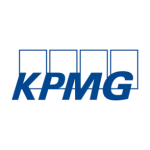The US tariffs are set to jump to 25% from January 2019, and the US has also suggested that they stand ready to impose tariffs on the remainder of China’s exports to the US. To mitigate the impact on Chinese enterprises engaged in outbound export activity, the following measures have been taken by Chinese government authorities:
Increase in the VAT refund rate: China’s export VAT policy differs from the approach in many developed countries. Rather than simply zero rating exports, and refunding all of the input VAT associated with the exports, China’s longstanding policy is to only refund part of the VAT, and tinker with the refund rates for different products, as needed. On September 5 2018 and October 22 2018, the Ministry of Finance (MoF) and State Administration of Taxation (SAT) jointly issued two lists (Caishui (2018) 93 and 123) in tandem, in which nearly 1,600 product export VAT refund rates have been enhanced.
Pilot e-commerce zone export exemption rule: On September 28 2018, the MoF, SAT, Customs, and Ministry of Commerce (MOFCOM) collectively issued Circular (2018) 103 (Circular 103) to adjust VAT and consumption tax rules for exports. From October 1 2018, even where an exporting enterprise is unable to present the relevant goods purchase documents, relating to B2C exports through an integrated e-commerce pilot zone, it may still obtain a VAT and consumption tax exemption. This may be of relevance where a trader in the pilot zone is facilitating the export of goods by very small-scale Chinese producers. This is in line with the trend for the Chinese government to cut red tape for exporters and to let the maximum number of enterprises access export tax exemptions.
Paperwork: SAT Announcement 48 provides for a nationwide rollout of streamlined and paperless VAT refund declaration procedures for exports, starting from October 15 2018. In addition, the State Council on October 19 2018 set out 20 measures to, inter alia, reduce documentation requirements for the authenticity verification of imports and exports from 86 to 48, and to streamline supervision procedures for imports and exports.
Besides the above, China continues to make significant efforts to negotiate new free trade agreements (FTAs) and regional trade agreements in support of trading activity.
At the same time, and linked to the Chinese government’s repeated assertions that it is a major proponent of continued economic globalisation, the general hurdles for imports into China have been lowered. Over the past year, China has announced several batches of tariff reduction measures. The first batches of tariff reduction were effective from May 1 and July 1 2018, respectively, covering pharmaceuticals, auto and consumer goods. The most recent announced tariff reduction will take effect from November 1 2018, covering 1,585 tariff codes and mainly applies industrial products, textile and construction materials. It is expected that the average tariff rate will be reduced to 7.5% after this round of reductions, as compared to 9.8% that was the average tariff rate last year.
In addition, against the backdrop of US tax reform having driven significant changes to the global tax landscape, China, as with other countries, has continued to improve its business environment and encourage inbound investment. Many of these measures had already been announced by Chinese President Xi Jinping in a major address in April 2018. Most recently, on September 29 2018, the relevant Chinese government authorities released Caishui (2018) 102 (Circular 102), expanding the scope of the current withholding tax (WHT) deferral incentive for profit reinvestments in China. The original December 2017 rules provided the incentive solely for investment in ‘encouraged projects’. The latest change, retroactively effective from January 1 2018, expands the coverage to all permissible China projects.

|

|
Khoonming Ho (khoonming.ho@kpmg.com) and Lewis Lu (lewis.lu@kpmg.com)
KPMG China
Tel: +86 (10) 8508 7082 and +86 (21) 2212 3421
Website: www.kpmg.com/cn













